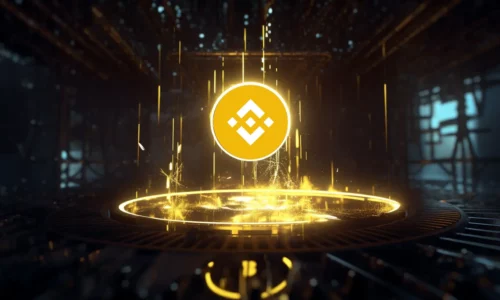In the rapidly evolving landscape of cryptocurrencies and blockchain technology, Cardano (ADA) stands out as a pioneering project that focuses on creating a more secure and scalable blockchain platform. With its innovative approach and dedication to research-driven development, Cardano aims to address some of the limitations of existing blockchain networks. Let’s look at key features and advancements that make Cardano a promising contender in the world of blockchain technology.
The Need for Scalability and Security in Blockchain
The Challenge of Scalability
Blockchain technology has gained significant attention over the years, but one of the major challenges faced by many blockchain networks is scalability. Traditional blockchains, such as Bitcoin and Ethereum, struggle with slow transaction processing times and high fees during times of network congestion. This hinders their ability to scale effectively and accommodate a growing user base.
The Imperative of Security
Security is another crucial aspect of blockchain technology. The decentralized and immutable nature of blockchains makes them inherently secure against fraud and tampering. However, ensuring the security of the underlying protocol and smart contracts is paramount to prevent vulnerabilities and attacks.
Enter Cardano: A Research-Driven Approach
The Foundation of Research
Cardano takes a unique approach by emphasizing research and scientific rigor in its development process. The project is led by Input Output Hong Kong (IOHK), a blockchain research and development company that places a strong emphasis on peer-reviewed academic research. This commitment to a scientific approach sets Cardano apart in the blockchain space.
Ouroboros: The PoS Protocol
Cardano employs the Ouroboros proof-of-stake (PoS) consensus protocol, which plays a pivotal role in achieving both scalability and security. Unlike the energy-intensive proof-of-work (PoW) consensus used by Bitcoin, Ouroboros enables efficient and environmentally friendly consensus through staking. This means that participants can validate transactions and create new blocks based on the number of ADA tokens they hold and are willing to “stake” as collateral.
Layers of Innovation: Cardano’s Architecture
Settlement Layer
Cardano’s architecture consists of two main layers: the settlement layer and the computation layer. The settlement layer handles the native cryptocurrency, ADA, and focuses on secure and efficient transactions. This separation of layers allows for greater flexibility in upgrading and maintaining the network.
Computation Layer
The computation layer is where smart contracts and decentralized applications (DApps) operate. Cardano’s approach to smart contracts is rooted in formal verification, a mathematical method that ensures code correctness and reduces the risk of bugs and vulnerabilities. This approach enhances the security and reliability of smart contracts on the platform.
Addressing Interoperability
Interoperability is a key consideration in the blockchain space, as different networks often struggle to communicate effectively with each other. Cardano addresses this challenge through its research-driven approach, aiming to create a universal framework that allows seamless communication between blockchains. This could potentially lead to greater efficiency and collaboration within the blockchain ecosystem.
Sustainability and Governance
Treasury System
Cardano introduces a treasury system that allocates a portion of ADA tokens to fund ongoing development and initiatives. This self-sustaining model reduces reliance on external funding sources and ensures the longevity of the project.
Decentralized Governance
Decentralized governance is another cornerstone of Cardano’s design. Through a voting mechanism, ADA holders can propose and vote on protocol upgrades and improvements. This democratic approach empowers the community to shape the future of the network.
Conclusion
Cardano’s commitment to research, security, scalability, and interoperability sets it apart as a prominent player in the blockchain industry. By combining a scientific approach with innovative consensus mechanisms and architectural design, Cardano aims to build a more secure and scalable blockchain that can effectively meet the demands of a rapidly evolving digital landscape.
FAQs
- What is Cardano’s main innovation? Cardano’s main innovation lies in its research-driven approach, Ouroboros proof-of-stake consensus, and emphasis on formal verification for smart contracts.
- How does Cardano address scalability? Cardano addresses scalability through the Ouroboros proof-of-stake consensus, which enables efficient and secure transaction validation.
- What is the significance of Cardano’s treasury system? Cardano’s treasury system ensures ongoing funding for development and sustainability without relying solely on external sources.
- How does Cardano achieve decentralized governance? Cardano achieves decentralized governance by allowing ADA holders to propose and vote on protocol upgrades, fostering a democratic decision-making process.





